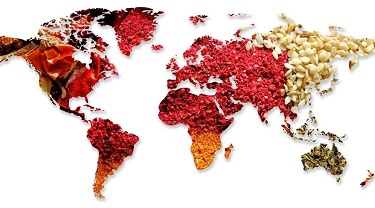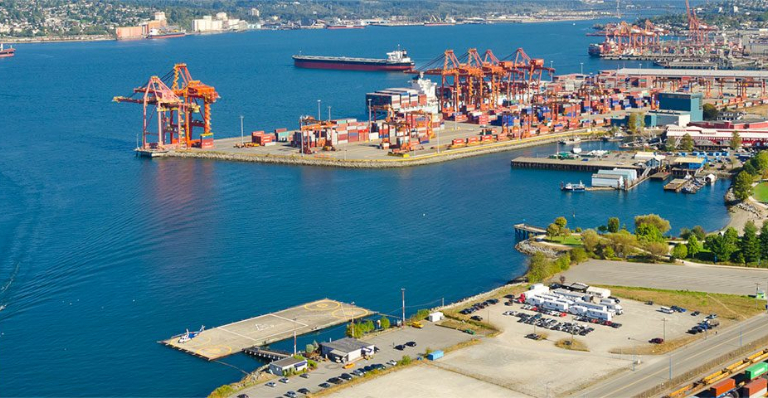Rules of origin determine the country source of a product or service destined for export. Although it seems a simple concept, global supply chains make rules of origin complex, with a clear definition constantly open to interpretation. Does a product originate in the place where it’s manufactured? Or is the originating country where materials were grown or sourced? What about modern products that are made of up components from all corners of the globe?
It’s no wonder then that rules of origin are frequently open to interpretation in free trade negotiations. Partly, this is because how rules of origin are defined – and subsequently applied — can have a big impact on exporters.
Preferential Rules of Origin
Undoubtedly, among the most attractive things about selling to countries with which Canada has negotiated a free trade agreement (FTA) are the tariff reductions that benefit Canadian businesses and exporters. That’s because FTAs include preferential rules of origin, which reduce or eliminate tariffs on many goods and services traded between the signatory countries.
Depending on what you’re selling and where its components come from in the global supply chain, the products and services you offer may be eligible for preferential status. Preferential rules of origin often allow Canadian businesses to be treated like local businesses in foreign markets where an FTA is in place. If they’re eligible, Canadian businesses can sell their Canadian-originating goods without paying duties or tariffs.
Non-preferential Rules of Origin
Outside of free trade agreements, non-preferential rules of origin are also used commercially to identify goods and their components, and legally to regulate and monitor international trade. Goods not subject to bilateral or multilateral trade agreements are still subject to non-preferential rules of origin, which are overseen and mediated by the World Trade Organization (WTO).
Individual countries use non-preferential rules of origin to protect their domestic markets and suppliers. Non-preferential rules of origin may be used as a tool to track quotas, to regulate dumping of excess goods and to uphold anti-circumvention laws. Non-preferential rules of origin are used for other commercial reasons, such as regulating labeling of goods and the monitoring of trade embargoes.
The WTO generally defines a product’s origin as the place where it was wholly sourced or the country where the “last substantial transformation took place.” At first glance, it may seem clear. But rules of origin differ between free trade agreements. Their precise definition is often a key negotiating point in free trade talks.
The first half of the definition is relatively easy. Products that are sourced 100 per cent from the originating country – livestock born and raised in Canada, for example, or soy beans grown in the Prairies – generally qualify as goods that originate wholly in Canada and are subject to preferential rules of origin within trade agreements.
The latter half of the definition – substantial transformation of a product — leaves rules of origin open to interpretation, however.
That’s because the emergence of global supply chains has made the determination of a product’s origin tricky, particularly within the manufacturing sector. It’s not uncommon for a manufactured product to source parts from dozens of countries.
Within FTAs, individual parties can negotiate what determines an item’s eligibility for preferential rules of origin based on its route through the supply chain. The percentage of materials sourced from signatory countries versus non-originating countries is also an issue.
“You don’t want to exclude these products from the agreement, so in order to include them, you design rules of origin that will define how finished products can be accepted and get the benefit of the lower tariff or no tariff,” says Christian Sivière, a trade consultant with Solimpex. He notes that rules of origin rose to prominence during the WTO’s Uruguay Round of negotiations, which took place between 1986 and 1994.
The definition of “origin” can differ substantially between free trade agreements, depending on the negotiations between the countries involved. Under NAFTA in its current form, 60 per cent of materials or components within a product must come from a signatory country in order to meet rules of origin standards.
Most items under the Comprehensive Economic and Trade Agreement (CETA) between Canada and Europe, on the other hand, require only 50 per cent of a product to come from the originating country. CETA rules in this instance tend to be more favourable than NAFTA rules for Canadian exporters.
“Each FTA will have specific rules that you have to go and look into,” says Sivière. “The same item may have different rules of origin requirements in different agreements.”
Further comparing NAFTA and CETA, we can look at the de minimis exemption clauses — de minimis is a Latin word that denotes what is considered a “negligible quantity.” In this case, it refers to a negligible quantity of foreign content. Under NAFTA the de minimis is generally seven per cent. CETA stipulates a product can contain as much as 10 per cent foreign content without it even having to be declared.
Sector-specific Rules of Origin
Rules of origin differ from sector to sector. Automobiles, classified under NAFTA, must contain 62.5 per cent North American content to get duty-free access to any of the three signatory countries. In the auto parts sector, the magic number is 60 per cent.
For fertilizers and pharmaceuticals, the rule of origin depends on how it’s calculated — the selling price or your price to produce the item. Generally between 50 and 60 per cent of materials must contain North American content. On soaps, artificial waxes, polish preparations and candles, the number is 50 or 65 per cent, depending on the method.
“Generally speaking, we can say that food is relatively easy to figure out and textiles are considerably more complex,” says Sivière.
There are also further nuanced differences between CETA and NAFTA, depending on the sector. NAFTA, for example, requires a tariff shift on pharmaceutical products, meaning the company has transformed raw materials into something new. The product also must contain a minimum of 60 per cent regional value content based on the selling price, or 50 per cent based on the cost price. CETA only mandates the tariff shift, which again creates favourable conditions for Canadian pharmaceutical manufacturers.
Looking at soap for personal, rather than industrial, use, both agreements require a tariff shift. NAFTA also requires at least 65 per cent regional value content based on the selling price, or 50 per cent based on the cost price. CETA, meanwhile, requires 80 per cent regional value content based on the selling price. In this case, NAFTA’s requirements are easier for Canadian companies to meet.
What happens if there’s no free-trade agreement?
The general rules — as set out by the World Customs Organization and enforced by the WTO — are that developing countries get a favourable rate of duty in most countries. The less-developed-country tariff requires that products have only 40 per cent of the exporting country’s local content. Developing countries can pool their content. A shirt exported from Bangladesh with only 20 per cent Bangladeshi content is fine, providing another 20 per cent of the product also comes from a developing nation.
“So if you’re sending items from Bangladesh or Burkina Faso, the rule is that the item must have 40 per cent local content,” Sivière said.
There’s also something called the most-favoured-nation tariff that says a product must have sourced 50 per cent its content from the exporter.
“Ironically, it’s called the most-favoured-nation tariff, but it’s not the cheapest,” Sivière says with a laugh. “You may remember when then-Prime Minister Stephen Harper changed China’s designation from less-developed to most-favoured-nation. China complained a lot about that.”
The World Trade Organization’s role
Most free trade agreements have a mechanism to solve disputes. NAFTA, for example, has the controversial Chapter 19, which the U.S. is arguing to abolish. But if a company or a country doesn’t like the decision of the tribunal, they can then go to the World Trade Organization (WTO) with their complaint.
Understanding the terms
Country of manufacture: The country where the product is manufactured. A Canadian-made product that is put together with parts from other countries, but manufactured in Canada, may still have “Canada” listed as its “country of origin”.
Regional content: Refers to product originating in any of the signatory countries of a free trade agreement. Under NAFTA, for example, regional content would apply to any product or part of a product originating in Mexico, Canada or the United States.
Non-originating material: A material or component sourced from a country of origin that is different from the country exporting the final product. Generally used to describe a country that is not a signatory to a particular free trade agreement.
HS Code: The Harmonized Commodity Description and Coding System is the international classification of goods. Every item — including raw materials, electrical components, grains used in food manufacturing and completely fabricated goods — has a unique Harmonized System Code (HS Code) that is used by customs officials to classify imports. HS Codes are also used to identify which goods are subject to preferential rules of origin under FTAs.
Tariff shift: Manufactured goods frequently use raw materials or components from a number of countries. Every component has a unique HS Code or tariff classification. Generally, FTAs offer preferential rules of origin to goods that have a percentage of their HS components originating from one of the signatory countries. An exporter that uses non-originating materials may find that preferential rules of origin do not apply and the exporter will have to pay tariffs on their goods.
On the other hand, a manufacturer can trigger what’s called a “tariff shift,” if they “substantially transform” the raw material into a completely new product, with a new HS code. A Canadian pasta-maker that sources ground quinoa flour from Bolivia, for example, can trigger a tariff shift by making the quinoa flour into noodles, a completely new product with a unique HS code. Under the rules of origin within the free trade agreement, the pasta-maker won’t have to pay tariffs.
On the other hand, a Canadian retailer that sources quinoa flour from Bolivia, packages it in Canada and tries to sell to customers in the U.S. has not triggered a tariff shift. The packaged flour would therefore not see preferential treatment and would be most likely subject to tariffs.







